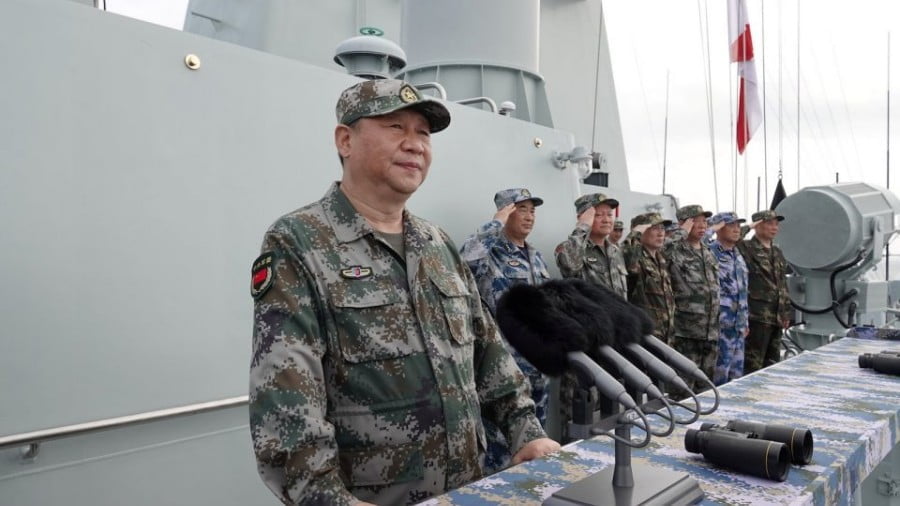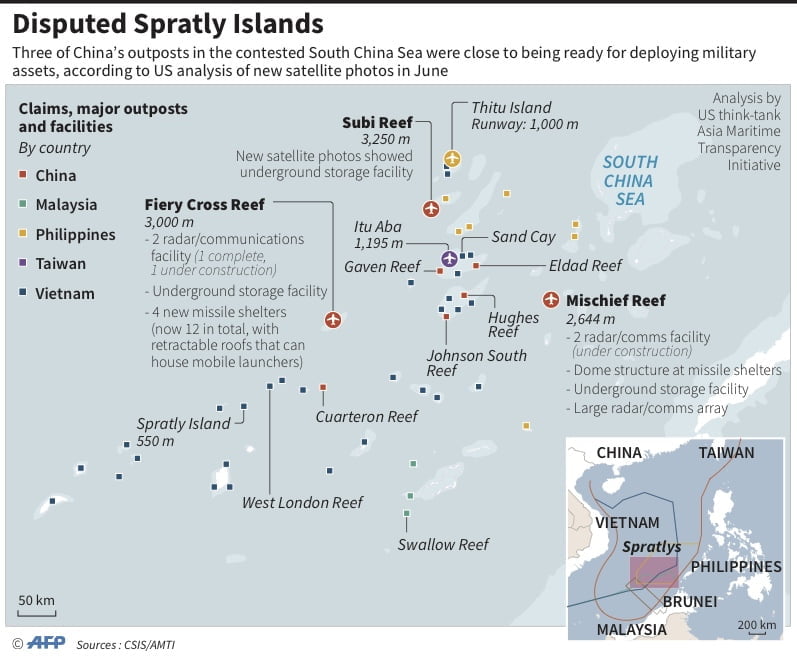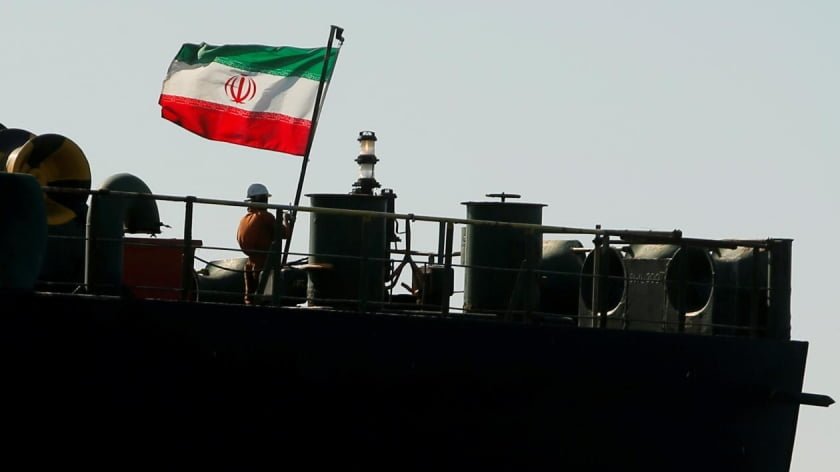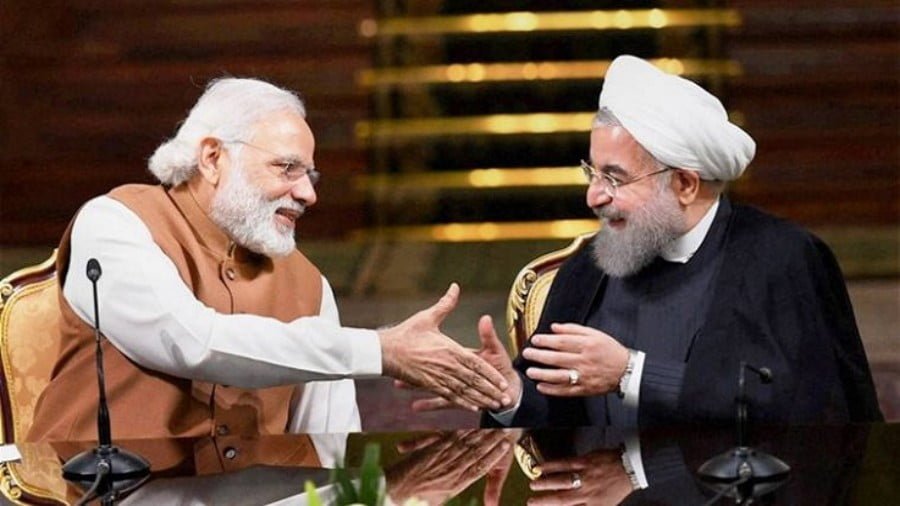Short of War, China Now Controls South China Sea
Tensions in the South China Sea are on the boil again amid new reports that China has deployed advanced missiles to land features in the disputed maritime area.
According to new reports, China has installed several Surface-to-Air Missiles (SAMs) and Anti-Cruise Ballistic Missiles (ACBMs) systems across the Paracel and Spratly island chains, parts of which are claimed by multiple regional states including the Philippines and Vietnam.
Weeks earlier, China also deployed electronic jamming equipment to the maritime area, giving it the ability to disrupt the command-and-control communications of rival states’ military assets operating in the South China Sea.

Boosting China’s missile defense system in the area would allow it to progressively restrict the movement as well as squeeze the supply lines of smaller claimant states, all of which maintain comparatively modest military capabilities to fortify their sea claims.
The reports immediately rekindled tensions between China and key Southeast Asian claimant states, including the Philippines. Crucially, it has also reignited an ongoing debate between doves and hawks within the Philippine government.
In recent days, images of Chinese military assets in Philippine-claimed features, namely the Fiery Cross, Mischief and Subi reefs, have dominated news headlines in Manila.
Senior Filipino defense officials have repeatedly expressed concerns over China’s militarization of the disputed area. Earlier this year, Philippine Defense Secretary Delfin Lorenzana claimed that China promised not to deploy more military assets to Philippine-claimed land features.
The recent reports will thus likely be interpreted by Filipino top brass as a betrayal of trust while giving new ammunition to already strong anti-China rally cries among nationalistic Filipinos.
Amid rising public pressure for the Philippine government to take a harder stance, the Senate is scheduled to conduct an inquiry into the direction of Philippine-China relations and ways to protect the country’s interest in the South China Sea.
Philippine Foreign Secretary Alan Peter Cayetano, known for his dovish position on China, has inn recent days tried to strike a new balance: “We’re taking it seriously. We’re verifying the information [about the deployment of missile systems].”
“The problem is it can’t be solved just by the Philippines and China,” claimed the Philippines’ top diplomat. “This is what the President was saying, that it’s not directed at us, but of course our allies and defense are saying that they may have missiles there. It could affect anyone.”
Cayetano promised to coordinate with defense authorities, including the defense secretary and the national security adviser, to verify the reports and consider an appropriate response.
In a high-profile press conference, the US Ambassador to the Philippines, Sung Kim, expressed his concern over any “aggressive unilateral action toward militarization,” while saying that China is “moving toward militarization” of the disputes.
In Washington, the White House took a more strident stance. White House Press Secretary Sarah Sanders told media that the Trump administration has “raised concerns” with China, warning the Asian powerhouse about “near-term and long-term consequences” if there was not a change of course.

A top Pentagon official told CNBC that China’s deployment of missile defense systems in the South China Sea shows “the further militarization of [artificially-created] outposts” by China and “will only serve to raise tensions and create greater distrust among claimants.”
Last month, Admiral Philip Davidson, the incoming chief of the US Navy’s Pacific Command, said in written testimony to the US Senate Armed Services Committee that China’s militarization of the disputes represent “a substantial challenge to US military operations in this region.”
“The only thing lacking are deployed forces. Once occupied, China will be able to extend its influence thousands of miles to the south and project power deep into Oceania,” warned the American admiral. “In short, China is now capable of controlling the South China Sea in all scenarios short of war with the United States.”
Under President Donald Trump’s administration, the US has stepped up its freedom of navigation operations in the South China Sea, aiming to deter the establishment of a full-fledged Chinese exclusion zone in the area.
Against that backdrop, US and Philippine forces launched on Monday their largest joint military exercises under Philippine President Rodrigo Duterte, who previously aimed to scale down the so-called Balikatan, or shoulder-to-shoulder, drills in a move seen as appeasing China.

Filipino officials insisted the regular exercises, comprised this year of around 8,000 Philippine and US forces as well as contingents from Japan and Australia, were not trained on China and focused more on counterterrorism.
China, for its part, has remained adamant that its actions are purely defensive. “Our peaceful construction activities on the Nansha [Spratly] Islands, including the deployment of necessary national defense facilities, are meant to safeguard China’s sovereignty and security, which is also the rights a sovereign state is entitled to,” China’s Defense Ministry spokesman Hua Chunying recently said.
Despite a growing public backlash, Duterte seems determined to continue with his rapprochement with China. In a controversial speech on May 4, the Filipino president went so far as to claim that China aims to protect, rather than imperil, the Philippines’ national interests.
“China said, ‘We will protect you. We will not allow the Philippines to be destroyed. We are just here and you can call for our help anytime,’” said Duterte, desperately seeking to assuage rising criticism of his close relations with Beijing.
Harry Roque, Duterte’s spokesman, claimed that “we are confident that those missiles are not directed at us,” given the “recently developed close relationship and friendship” between the Philippines and China. He did not explain, however, to whom the projectiles are pointed at instead.








